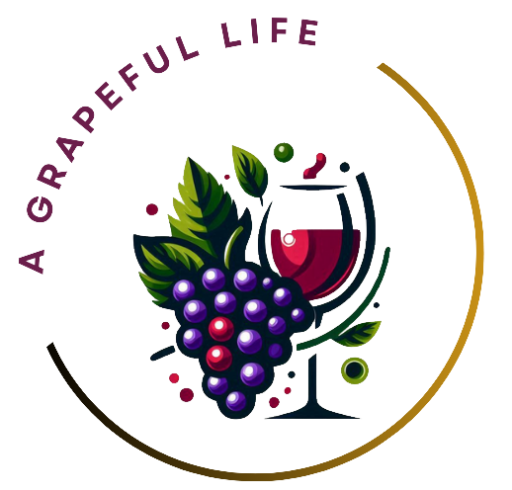Ever wondered how to host a wine tasting at home and impress your friends or simply elevate your wine knowledge? Hosting a wine tasting is a fun, interactive way to explore different wine styles, deepen your appreciation, and enjoy a memorable social experience.
In this guide, we’ll walk you through how to host a wine tasting at home—from selecting wines to creating the perfect atmosphere—all without the need for a sommelier or fancy equipment.
For more foundational wine knowledge, check out our Ultimate Guide to Wine: Learning to Understand, Taste, and Appreciate.
Why Host a Wine Tasting at Home?
Hosting a wine tasting at home allows you to:
- Explore new wine varieties.
- Learn more about tasting notes, aromas, and textures.
- Share a unique experience with friends and family.
- Tailor the event to your preferences and budget.
Whether you’re a seasoned enthusiast or a curious beginner, hosting a wine tasting can be as formal or casual as you like.
Step 1: Choose Your Wine Tasting Theme
The first step in how to host a wine tasting is choosing a theme to give your tasting structure and focus.
- Varietal tasting: Compare the same grape variety from different regions (e.g., Chardonnay from Chablis, California, and Australia).
- Regional tasting: Explore wines from one region (e.g., Tuscany, Napa Valley).
- Old World vs. New World: Compare European wines with counterparts from Australia, the US, or South America.
- Price point comparison: Taste wines at different price ranges to see if more expensive wines stand out.
- Vertical tasting: Sample different vintages of the same wine to explore aging effects.
Popular Wine Tasting Themes:
Your theme will guide wine selection and make the experience more cohesive.
Step 2: Select the Wines
For beginners, 4 to 6 different wines are ideal. Too many, and palates get fatigued.
Tips for Selecting Wines:
- Stick to your theme.
- Include a mix of reds, whites, or rosé depending on your guests’ preferences.
- Choose wines with varying styles (e.g., light-bodied vs. full-bodied).
- For blind tastings, cover the labels to avoid bias.
Don’t forget to include some wine tasting notes to share with guests, which can help spark discussion.
Must-Have Items:
Step 3: Gather Your Supplies
You don’t need specialized equipment to host a wine tasting at home, but a few essentials will elevate the experience:
- Wine glasses: One per guest per wine is ideal, but you can rinse between tastings.
- Spittoons or cups: Optional, but handy if guests want to taste without drinking too much.
- Water and crackers: Cleanse the palate between wines.
- Tasting sheets and pens: For guests to jot down notes (download templates or create your own).
- Wine opener and decanter: Depending on your wines, decanting can enhance flavors.
Optional extras include aroma kits, cheese boards, or even themed decorations.
Step 4: Prepare the Space
Creating the right environment is key when hosting a wine tasting at home.
Setting the Scene:
- Use neutral-colored tablecloths and clear glasses to avoid color distortion.
- Ensure good lighting to properly observe wine color and clarity.
- Avoid strong scents (like candles or cooking aromas) that could interfere with wine aromas.
- Arrange seating so guests can easily interact.
Consider setting up a wine tasting flight order—usually light whites first, then rosés, followed by reds, and ending with dessert wines.
Step 5: Serve the Wine Correctly
Temperature matters when hosting a wine tasting. Here’s a quick guide:
- Sparkling wines: 6-10°C (43-50°F)
- White wines: 7-13°C (45-55°F)
- Rosé wines: 10-13°C (50-55°F)
- Red wines: 15-18°C (59-65°F)
- Dessert wines: 8-12°C (46-54°F)
Pour about 60-90 ml (2-3 oz) per tasting. This gives enough to swirl, sniff, and sip without overwhelming.
Step 6: Guide the Tasting
Teach your guests the 5 S’s of wine tasting:
- See – Observe the wine’s color and clarity.
- Swirl – Aerate the wine to release aromas.
- Sniff – Identify primary scents (fruit, floral, earthy, etc.).
- Sip – Taste, noting flavors, textures, and balance.
- Savor – Reflect on the finish (aftertaste) and overall impression
Encourage discussion around tasting notes, personal preferences, and questions. Remember, there are no wrong answers in wine tasting—everyone’s palate is unique!
For more on the 5 S’s of wine tasting, visit our Ultimate Guide to Wine.
Step 7: Pair with Food (Optional)
If you’d like to include food, keep it simple and complementary.
Food Pairing Ideas:
- Cheese platters: Offer a mix of soft, hard, and blue cheeses.
- Charcuterie: Cured meats, olives, and nuts work well.
- Light appetizers: Breadsticks, fruit, or canapés.
Avoid spicy or overly flavorful foods that could overpower the wine.
Step 8: Add Fun Elements
Make your home wine tasting even more memorable with:
- Blind tasting rounds: Cover bottles and have guests guess the varietal, region, or price.
- Scoring games: Award points for accurate guesses or fun categories (e.g., “Best Aroma”).
- Wine trivia: Test your guests’ wine knowledge between pours.
These elements encourage interaction and keep the mood light and engaging.
Step 9: Provide Takeaways
Offer tasting notes sheets or send a follow-up email listing the wines sampled. Guests may want to purchase their favorites.
Consider suggesting a wine subscription box for those interested in exploring more, like we feature in our best organic wine subscriptions review.
Final Thoughts: Why Host a Wine Tasting at Home?
Hosting a wine tasting at home is a fun, approachable way to deepen your understanding of wine, discover new favorites, and connect with others.
It doesn’t have to be intimidating—just gather some wines, follow this guide, and let the conversation flow!
For more wine tips, tasting techniques, and educational content, don’t miss our Ultimate Guide to Wine: Learning to Understand, Taste, and Appreciate.
